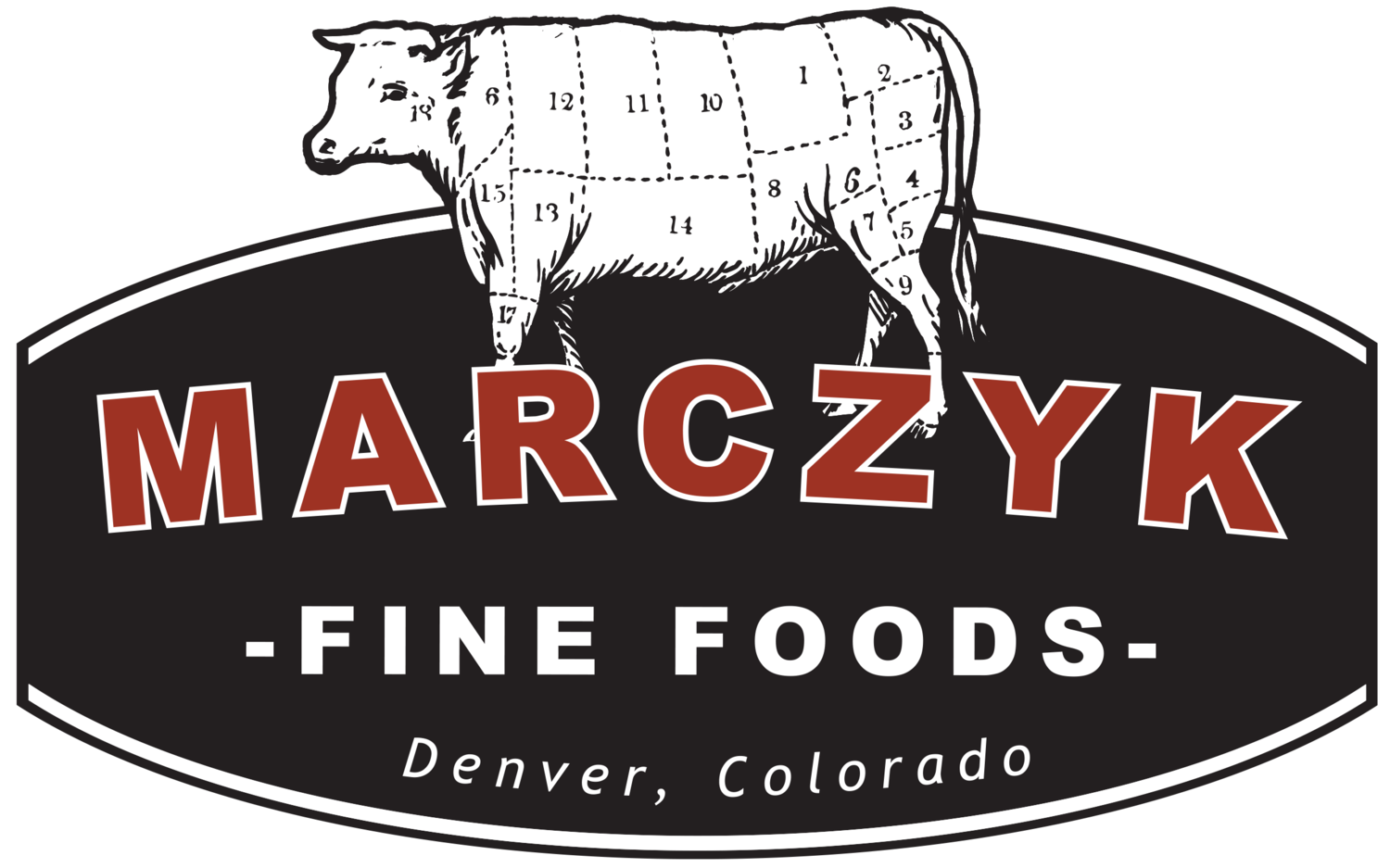Bill St. John Knows From Pork
BY BILL ST. JOHN
Bill St John here. Not the Bill St John who types up recipes for Marczyk Fine Foods or helps you slap together a quick, simple dinner for the family. The Bill St John who makes a living with his taste buds, the restaurant critic, the cooking meister, the guy who, when he experiences something uniquely flavorful, can’t wait to tell you about it.
Like the other day, when I ate a handful of simply dressed red Russian kale from Denver’s downtown Altius Farms. I’ve eaten—and enjoyed—everything from sea urchin gonads to purslane weed harvested off the old golf course at City Park.
But until I met that kale, I detested kale. To me, kale was no taste, just texture; it was like swallowing pumice. But not Altius Farms’ red Russian kale, a tender, cool-weather kale far less abrasive than leafier, frilly-edged kales. It also was also surprisingly flavorful (why is that a surprise?) tasting like greens—verdant, vegetable-y, minerally, delicious
And then there is the pork from Niman Ranch. To invoke the wrong religion yet use its spot-on grammar, I know from pork: for close to 70 years, I’ve eaten pig from snout to wiggle, insides and outsides, from butchers and cooks all over the world.
But Niman Ranch pork is different; it truly is something else. I’ve cooked with it now several times, from shoulder to belly to loin. It’s not only that Niman Ranch pork has true pork flavor, it’s that that flavor is so richly deep that it shocks. When you first experience Niman Ranch pork, your palate remembers that of all the pork that you’ve eaten before, none had this much flavor.
A simple reason lies behind that pork, that flavor: the Niman Ranch “Pork Protocols,” numerous and extraordinarily detailed requirements that hog farmers must adhere to in order to be able to sell their animals under the Niman Ranch name.
First, note that, in the United States, close to a half million hogs are slaughtered each day. Niman Ranch processes 250 thousand hogs in a year. What’s happening here is small family farming. Noted.
I’ve closely read all 15 of the 8.5x11-inch pages of the Niman Ranch Pork Protocols. It turns up some fascinating information to explain why Niman Ranch pork tastes so good.
The animals’ overall diet, first of all, is 100% vegetarian and forbids the ingestion of anything remotely non-natural, including no antibiotics or certainly growth hormones. Of the 15 pages, the first two are like “one-pagers,” a table of contents and overview; and the last is a list of rules for record keeping (understandably precise, both the rules and the records).
Three early pages outline overall quality targets and stipulate the frequent audits and field inspections to be carried out.
But a full nine (9) pages of the Niman Ranch Pork Protocols are very detailed descriptions of how individual hogs and piglets will be cared for during their entire lives: birthed, raised, fed, bedded, managed, cleaned—every conceivable action or interaction involved in their husbandry.
The protocols say, among many things, that this is the kind of air that they’ll breathe, the sprinkling water that will cool them if the day of transport to the slaughterhouse is too hot, what the fire escape plan will be, and how their bedding and living space will allow them to “play, forage, explore, root, and chew.”
That’s why Niman Ranch pork tastes so good and is such a privilege to prepare and cook.
The animal from which it arrived to our kitchen counter was treated with respect, care, and dignity. It truly was treated as an individual and raised itself as such, a proper pig, full of its proper character as much as that could be.
